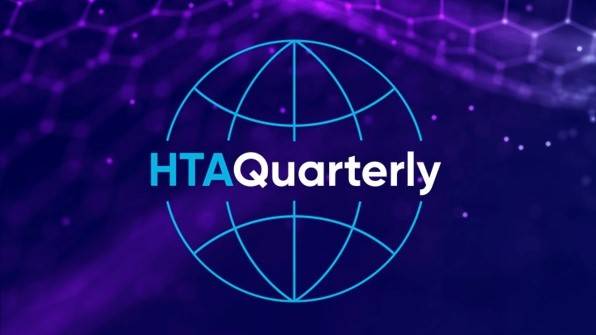Unlocking the potential of Nordic real-world data for PICO assessments in European HTA

The increased focus on PICOs

The intended outcome of JCA is to establish the relative effectiveness and safety of a new health technology as compared with new or existing technologies. This starts with a PICO (Population, Intervention, Comparator, Outcome) scoping process to inform which research questions must be addressed in the submission package and consequently determine the data that will be requested.

Nordic health registries to explore PICOs
The Nordic countries are renowned for their comprehensive, high-quality, and long-term health registries, often spanning decades. These registries have the potential to act as pivotal sources of RWD, supporting PICO assessments for both pharmaceuticals and medical devices. Importantly, the personal identification number used in the Nordics enables seamless integration of data across multiple sources and facilitates individual-level, multivariable analyses.

How can RWD support each PICO dimension?
How useful is Nordic RWD to support a general PICO assessment?
- Comprehensive coverage: Disease-specific quality registers, in Sweden in particular, support a wide range of therapeutic areas — from oncology and orthopedics to psychiatry and endocrinology.
- Linkability: The use of personal identity numbers allows linkage across registries, enhancing data depth and reliability.
- Generalizability: Although rooted in the Nordic context, the data are sufficiently robust to support broader European population studies. The national registries and many common registries across the Nordic countries cover a very large total population (the total Nordic population amounts to nearly 30,000,000 people).
- Efficiency: With the setup of data sources and an RWD protocol, PICOs can be updated continually with minimal effort, ensuring continuous alignment with current evidence.
- The sheer volume and granularity of disease-specific quality registers (specifically in Sweden) provide detailed data that can significantly enhance HTA evaluations, especially for medical devices where usage patterns and outcomes vary widely.
A study to explore the availability and capacity of Nordic health registries
General findings
Figure 1. Nordic health registries by therapeutic area



Next, relevant registries were evaluated for their ability to support population characterization, intervention tracking, comparator identification, and outcome measurement for the two hypothetical therapies.
Sources for registry data to support a PICO assessment for both the fictional oncology and medical device products were identified in each of the Nordic countries. There were seven relevant registries for the oncology product (Cenpicomab), of which four were available in all the Nordic countries and one was a disease-specific quality registry available in three countries.
For the medical device (Cenpicohip), there were four relevant registries, of which one was available in all countries and two were quality registries specific to the therapeutic area available in three countries.

Usefulness for respective PICO dimensions
(P)opulation
(I)ntervention
(C)omparator
(O)utcome
Final remarks
This article summarises Cencora’s understanding of the topic based on publicly available information at the time of writing (see listed sources) and the authors’ expertise in this area. Any recommendations provided in the article may not be applicable to all situations and do not constitute legal advice; readers should not rely on the article in making decisions related to the topics discussed.
Ta kontakt med teamet vårt

Sources
- Directorate-General for Health and Food Safety. Updated: List of ongoing joint clinical assessments. https://health.ec.europa.eu/latest-updates/updated-list-ongoing-joint-clinical-assessments-2025-09-02_en
- European Commission. Joint Clinical Assessments. https://health.ec.europa.eu/health-technology-assessment/implementation-regulation-health-technology-assessment/joint-clinical-assessments_en
- Joline Schmidt K, Konstanski M, Sauer A-K, et al. Understanding Joint Clinical Assessment scoping requirements in oncology: results of a rapid PICO prediction exercise via an in-house expert network. https://www.ispor.org/docs/default-source/euro2024/isporeurope24hta200posterfinal145403-pdf.pdf?sfvrsn=323db99a_0
- Laugesen K, Ludvigsson JF, Schmidt M, et al. Nordic health registry-based research: a review of health care systems and key registries. Clin Epidemiol. 2021;533-554.
- Member State Coordination Group on HTA (HTACG). 2024. Guidance on the scoping process.
- Nordforsk. Joint Nordic registers and biobanks: a goldmine for health and welfare research. https://www.nordforsk.org/2014/joint-nordic-registers-and-biobanks-goldmine-health-and-welfare-research
- The Swedish Research Council (n.d.). Guide till register- och hälsodata. https://dataguiden.se/
Cencora.com tilbyr automatiserte oversettelser for å hjelpe deg med å lese nettstedet på andre språk enn engelsk. Mye arbeid er lagt ned i disse oversettelsene for å gjøre dem nøyaktige, men ingen automatisert oversettelse er perfekt, og slike oversettelser er heller ikke ment å erstatte menneskelige oversettere. Disse oversettelsene leveres som en tjeneste til brukere av Cencora.com og leveres «som de er». Det gis ingen garanti av noe slag, verken uttrykt eller underforstått, med hensyn til nøyaktigheten, påliteligheten eller riktigheten av noen av disse oversettelsene som er gjort fra engelsk til andre språk. Det kan hende at noen typer innhold (som bilder, videoer, Flash osv.) er unøyaktig oversatt på grunn av begrensningene i oversettelsesprogramvaren.
Eventuelle avvik eller forskjeller som oppstår ved oversettelse av dette innholdet fra engelsk til et annet språk, er ikke bindende og har ingen juridisk virkning for samsvar, håndhevelse eller andre formål. Kontakt oss dersom du oppdager feil. Se den engelske versjonen av siden dersom du er i tvil om hvorvidt informasjonen i disse oversettelsene er nøyaktig.



